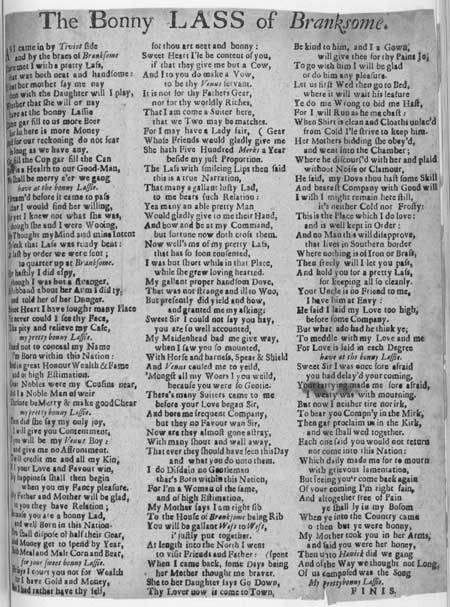Commentary
This ballad begins: 'As I came in by Tiviot side / and by the braes of Branksome, / There met I with a pretty Lass, / that was both neat and handsome: / If that her mother say me nay / then with the Daughter will I play, / Whether that she will or nay / have at the bonny Lassie.' 'Branksome' is a reference to Branxholme in Roxburghshire, the ancestral home of the Scotts of Buccleuch, 3 miles south of Hawick. 'Branksome' was also used as a literary motif during the early 1700s. The title of this song features in Allan Ramsay's (1686-1757) pastoral play 'The Gentle Shepherd' (1725) and the song was published in 1733 in William Thomson's 'Orpheus Caledonia'. It is an interesting reflection of eighteenth century attitudes to love and courtship. The song was traditionally said to have been written by 'Auld Hobbie o' Skelfhill'. Early ballads were dramatic or humorous narrative songs derived from folk culture that predated printing. Originally perpetuated by word of mouth, many ballads survive because they were recorded on broadsides. Musical notation was rarely printed, as tunes were usually established favourites. The term 'ballad' eventually applied more broadly to any kind of topical or popular verse.
View Transcription | Download PDF Facsimile
|


